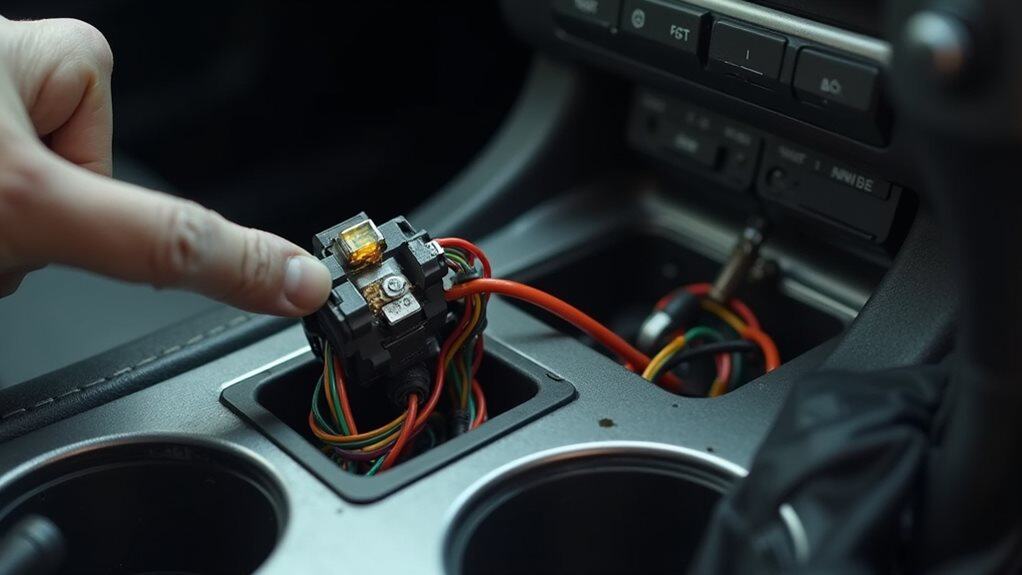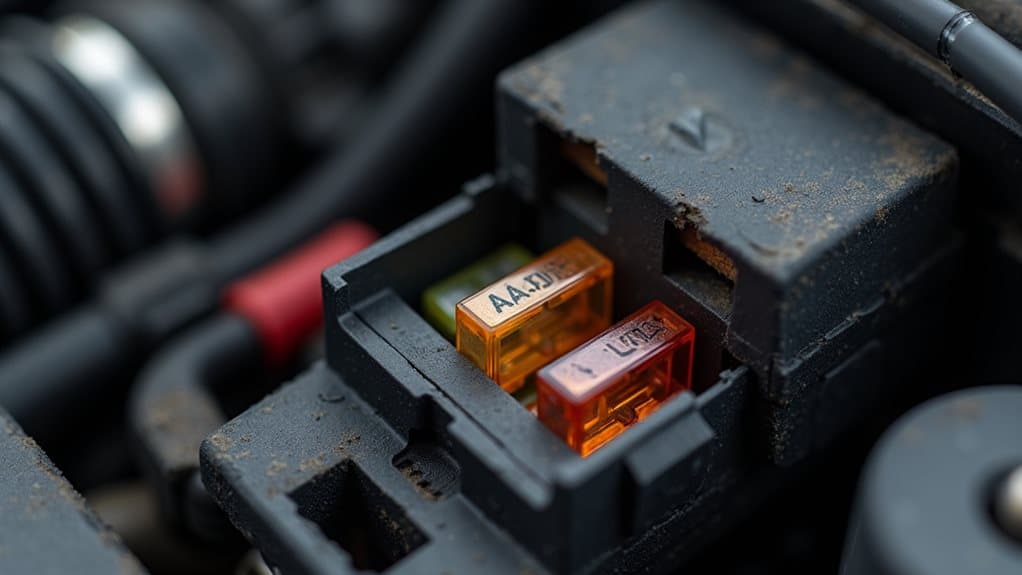The shift lock solenoid fuse protects the interlock circuit that keeps the shifter locked in Park until the ignition and brake inputs are correct, and you’ll usually find it in the interior fuse panel left of the steering column or under the dash. If it’s blown you may not move the lever out of Park, the brake lights may fail, or you’ll hear clicking near the column; check fuse continuity, brake-switch signal, and solenoid coil resistance to diagnose, and continue for repair steps.
Quick Tips
- The shift lock solenoid fuse is usually in the interior fuse panel left of the steering column or under the dash, labeled “Shift Lock” or “Shift.”
- A blown fuse prevents the shifter from moving out of Park even with ignition on and brake pedal depressed.
- Non-working brake lights often accompany a blown shift-lock fuse because the brake switch shares the circuit.
- Diagnose by checking fuse continuity/voltage, testing brake switch signal, and commanding the solenoid with a scan tool.
- Replace the fuse if blown; if problem persists, test solenoid resistance, brake switch, wiring shorts, or the shifter assembly.
What the Shift Lock Solenoid Fuse Does and Why It Matters

Because the shift lock solenoid is an electrical device that controls whether the gear lever can move out of Park, its fuse protects the solenoid circuit and guarantees safe, predictable operation.
You rely on that fuse to prevent electrical overloads that would disable the solenoid, ensuring shifts only occur with brake and ignition inputs, preserving transmission integrity and preventing unintended vehicle movement. Use a scan tool to command the shift interlock solenoid and confirm whether the issue is the solenoid itself or an input such as the brake switch. A faulty gas cap can cause EVAP leaks that trigger related engine codes and sometimes contribute to electrical diagnostic confusion.
Where to Find the Shift Lock Solenoid and Its Fuse
While the exact placement varies by make and model, you’ll usually find the shift lock solenoid mounted in the shifter linkage area—under the center console for floor-mounted shifters or at the base of the steering column on column-shift vehicles—so you can trace it mechanically to the gear lever. The fuse is typically in an interior fuse panel left of the steering column or under the dash, labeled. A common related failure is a bad brake light switch which can disable both the brake lights and the shift-lock solenoid. A failing brake booster can also cause a stiff brake pedal and related starting or shift-interlock issues.
Signs a Bad or Blown Shift Lock Solenoid Fuse

If your shift lever won’t move out of Park even when you press the brake and have the ignition on, that locked behavior is one of the clearest signs the shift lock solenoid fuse has failed or blown; you’ll often see this together with non-working brake lights because the same circuit frequently powers both the stop lamps and the interlock solenoid.
You’ll also notice clicking near the column, a stuck key, intermittent shifter response, or complete immobilization indicating fuse or circuit faults.
A common related issue is a failing key fob battery causing the vehicle’s security or immobilizer system to behave erratically, which can contribute to vehicle immobilization and prevent normal shifting.
Step-by-Step Diagnostic Checks and Quick Fixes
To begin diagnosing a shift lock solenoid issue, follow a clear step-by-step approach that isolates the fuse, wiring, control inputs, and the solenoid itself so you can identify the root cause without guessing.
Check fuse continuity and voltage, inspect and clean cable connections, test brake switch signal at the control circuit, measure solenoid coil resistance, and apply direct voltage briefly to confirm mechanical engagement. Regularly inspect related protective devices like fusible links to prevent unexpected failures and protect the vehicle’s electrical system from overloads, as a damaged fusible link can cause charging or starting issues.
Common Causes and When to Replace Parts

After you’ve checked fuses, wiring, brake switch signals, and the solenoid itself as described in the previous section, you’ll want to focus on the most common causes behind a failing shift lock solenoid and clear criteria for replacing parts.
Blown fuses, shorts, bad brake switches, weak batteries, or mechanical wear cause failures; replace the fuse, brake switch, solenoid, shifter assembly, or battery when tests confirm damage.
Wrapping Up
You’ve learned what the shift lock solenoid fuse does, where it’s located, and how a blown fuse mimics solenoid failure. Inspect the fuse box, check the fuse visually or with a multimeter, and try a known-good fuse to confirm; if the fuse blows again, diagnose wiring or the solenoid itself. Replace damaged fuses and faulty solenoids, follow OEM specs, and consult a professional when circuits short or diagnostics exceed basic checks.

